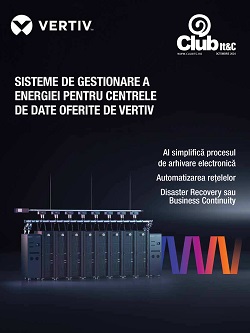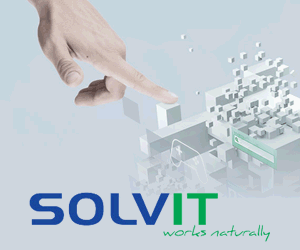When it comes to technical innovation, insurance is one of those industries that tends to get left behind.
 It’s inevitable in a way. Insurance is a heavily regulated, highly bureaucratic sector. Caution is in it’s very DNA. But times are changing. And as with many industries, insurance is reaching a crossroads. In order to stay relevant, businesses must reimagine how they operate.
It’s inevitable in a way. Insurance is a heavily regulated, highly bureaucratic sector. Caution is in it’s very DNA. But times are changing. And as with many industries, insurance is reaching a crossroads. In order to stay relevant, businesses must reimagine how they operate.
What’s been the catalyst for change? Well, there are a number of factors. The 2008 financial crisis for one put huge pressure on businesses, forcing them to work within ever-tighter profit margins. Reducing claims, operational costs, and maximising sales have since become imperative.
Tech trends have also proved to be a motivation. Technology such as AI and IoT bring huge opportunities that, if left on the table, will be snatched up by the competition. Furthermore, these innovations are raising the bar of customer expectation. Whatever customers do – from ordering online to opening a bank account – they have come to expect a seamless customer experience. And insurers must keep up.
To survive, insurance businesses need to become smart. So in this article, I want to explore how technology like AI is enabling them to discover new worlds of opportunity.
Embracing AI
Automation is something that is already widespread in the insurance business. Robotic Process Automation (RPA) in particular is commonplace, and has shown to yield up to 20% in cost reduction.
It is, however, limited. While RPA can automate tasks, it can’t learn. It can follow a set of instructions, but it can’t spot exceptions to rules and take on new information. The ability to learn over time is what makes AI unique, and has been shown to reduce costs by as much as 60%.
AI is supremely exciting. Not just because it automates the odd process that was otherwise manual, but because, when fully leveraged, it can transform the entire business. Car replacement, proving a car’s value, accessing damaging, underwriting – everything between the customer submitting a claim and the insurance company paying out can be taken care of by technology.
And we have a word for this kind of holistic, end-to-end automation: hyperautomation.
Of course the cost savings are a huge benefit of hyperautomation, but perhaps an even more significant perk is how it frees up employees’ time. With routine tasks taken care of, human labour is freed up to be spent on higher level – and more fulfilling – jobs such as sales, marketing, and delivering increased value to customers.
Transforming business
One of the areas that AI has had a dramatic impact is detecting fraud.
Insurance Europe estimates that European carriers lost €13 billion to insurance fraud in 2017 – so this certainly isn’t a small issue. Spotting those small patterns of behaviour that could indicate criminal activity is extremely difficult for a human. But thankfully, this is exactly where AI excels.
AI is already hard at work identifying suspicious transactions in the financial sector. But in insurance, this capacity is combined with the ability to read unstructured data – things like images and social media posts.
Trawling across social media to verify claims is too much work to scale. But AI is able to look through Instagram autonomously and note somebody is skiing the day after they claimed to break their leg. Or it may notice the same photo of a damaged car has been submitted two years in a row.
In this way, AI can be much more effective than humans in spotting foul play.
Another important area AI can improve is customer experience. As I said, a smooth, frictionless experience is something all customers expect – yet in the complex world of insurance, it’s rarely what they get.
Customers hate trawling through pages of information looking for the information they need – and they hate being stuck on hold while waiting for a customer service rep to answer their call even more. But with advancements in Natural Language Processing (NLP), customers can speak to chatbots as if they were human and get all the information they need.
Even more excitingly, our own Visual-SLAM technology or Mobility Digital Twin solution allows technology to automatically generate accident reports from telematics recordings. Customers do not need to fill out long, complex forms – they can simply answer questions on the phone, and AI does the rest.
From reactive to proactive
Perhaps the most transformative part of AI is the switch in mindset it will eventually bring. Once the real-time data and AI infrastructure is in place, businesses can switch from a ‘repair and replace’ model to a more cost effective ‘predict and prevent’ model.
Imagine a scenario where, rather than waiting for a customer to crash their car and submit a claim, insurers will be able to prevent the accident happening in the first place. They’ll be able to see in real-time when users take a risky route or go over the speed limit, and offer financial incentives (lower premiums for example) for correcting their behaviour.
This trend also works on a macro level. Climate change is an ever-increasing threat, and an insurer could for example advise a business to move their equipment to the top floor of their office in case of flooding.
In this way, insurance isn’t just a sort of tax paid in case things go wrong, but rather a dynamic service that has a real impact on people’s lives.
But let’s not get ahead of ourselves. The future is hugely exciting, but it all starts with that hyperautomation; closing the circle and ensuring automation runs through the DNA of the whole business. AI – not to mention other emerging tech like IoT and quantum – is already making ripples.
Once insurers start automating their operations and fully embracing technology, they won’t just transform their business – but also transform society as we know it.






























